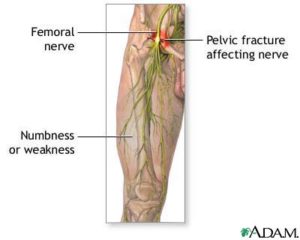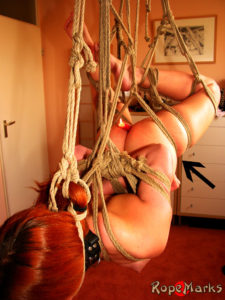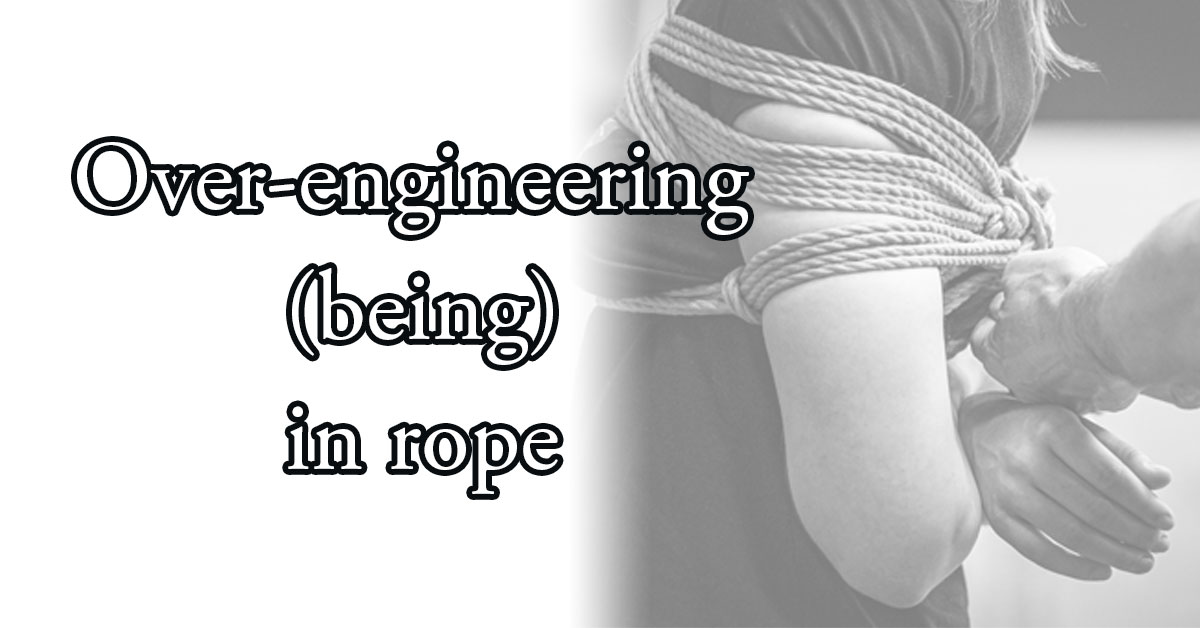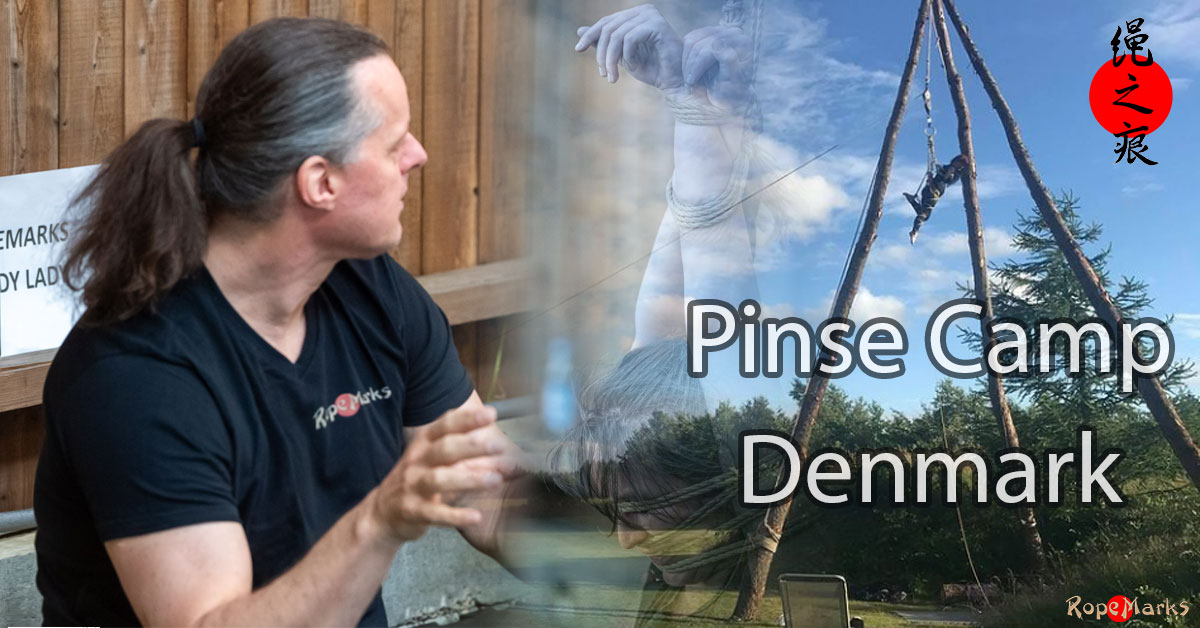Let’s discuss the femoral cutaneous nerve and the problems that can come from this related to kinbaku.
Here’s the situation
Consider a face down suspension where the pelvis and the upper legs are supported (next to all other support points). Here’s an example shot to give you an idea what sort of support points I’m talking about
Your session goes without problems your model experiences no problems, or “bad pain” at all. Some time AFTER the session, when your model is resting or you are talking over the session, the front center of one of the upper legs starts to feel numb.
The front center of the upper leg is approximatly a 4″x8″ area, and specifically this area, or part of this area starts to feel numb. You think about a nerve compression but a “normal” nerve compression makes the whole leg feel numb from where the nerve gets compressed down to to the toes and a “normal” nerve compression is immediate, there is no delay as is happening here. Even worse, the numbness lasts at least a number of days or even a few weeks or months.
What is happening here?
Back in the Victorian Era and there was a “Corset disease”. This manifested as a numbness in the front and lateral aspects of the thigh. Not well understood then, it is now known that it was caused by compression of a nerve root in the upper lumbar region and possibly other areas, that feeds the lateral femoral cutaneous nerve.

In this case it is a self-limiting (it healed on its own) contusion of the intermediate femoral cutaneous nerve (a branch of the femoral nerve) which supplies sensory nerves of the lower part of the area in the front center of the upper thigh, or possibly of the femoral branch of the genitofemoral nerve (a branch of the lumbar plexus) with supplies the upper part of the area in the front center of the upper thigh.
The delayed onset is most likly due to post-scene swelling of the area caused by the contusion.
How was this caused?

How can this be avoided?
In this case it is most likely that the ropes around the hips but low, towards the crotch, would have put pressure directly on the main femoral nerve where it passes over the pelvis.
As far as prevention, I would guess that slightly built females with little muscling or fat on the thigh and groin area might be more susceptible to pressure on these nerves. Also it would appear that keeping support bands either a bit higher on the hips, or more towards the middle of the thigh, might avoid the most sensitive areas.
Conclusion
Of course the results of this kind of compression will vary from person to person because human are not made on an assembly line. The nerve locations vary slightly from person to person. The moral is, all bottoms are different and numbness and tingling are not the only indicators of problems.
Bob
September 2005
References:














Leave A Comment